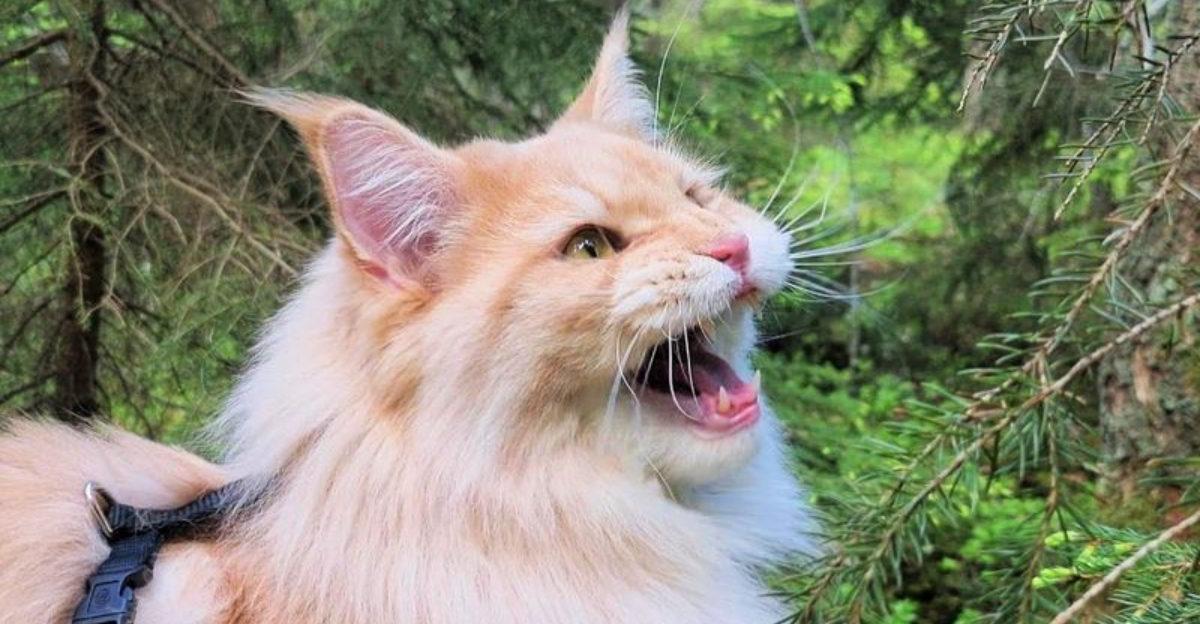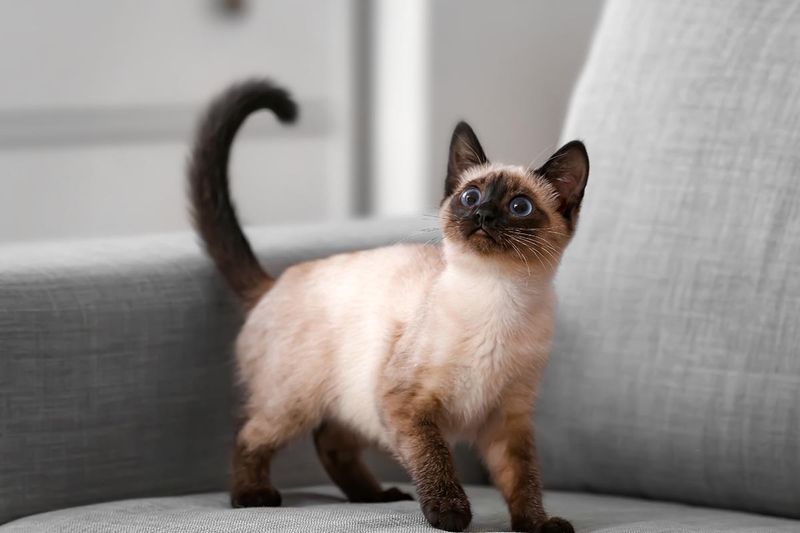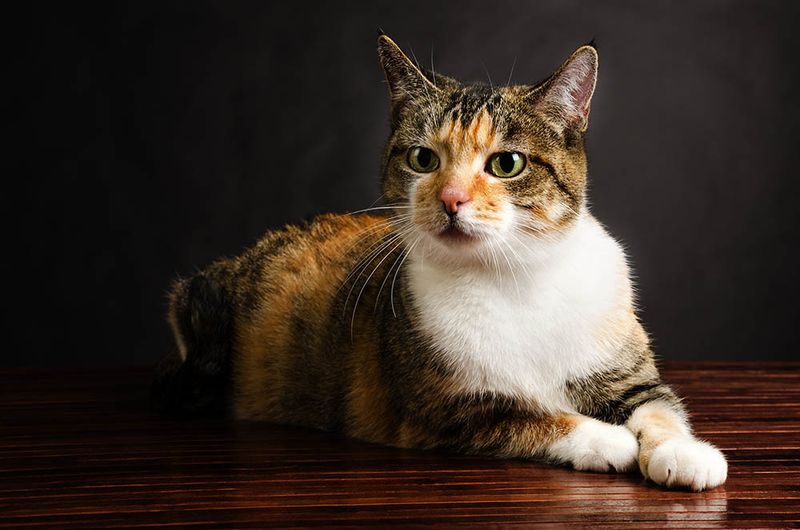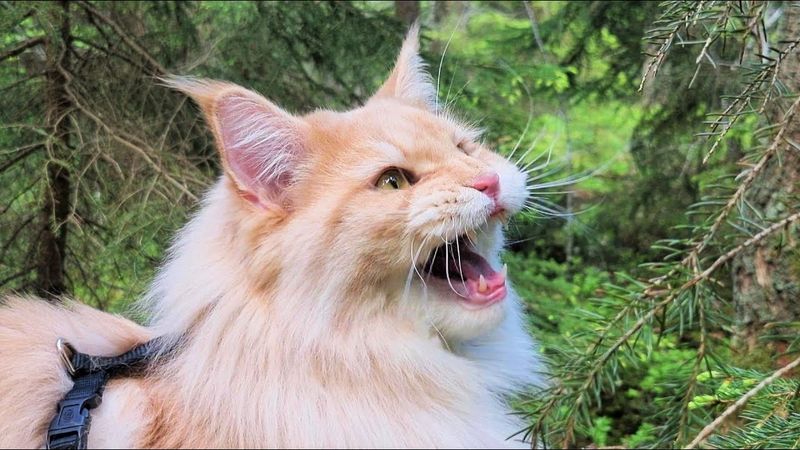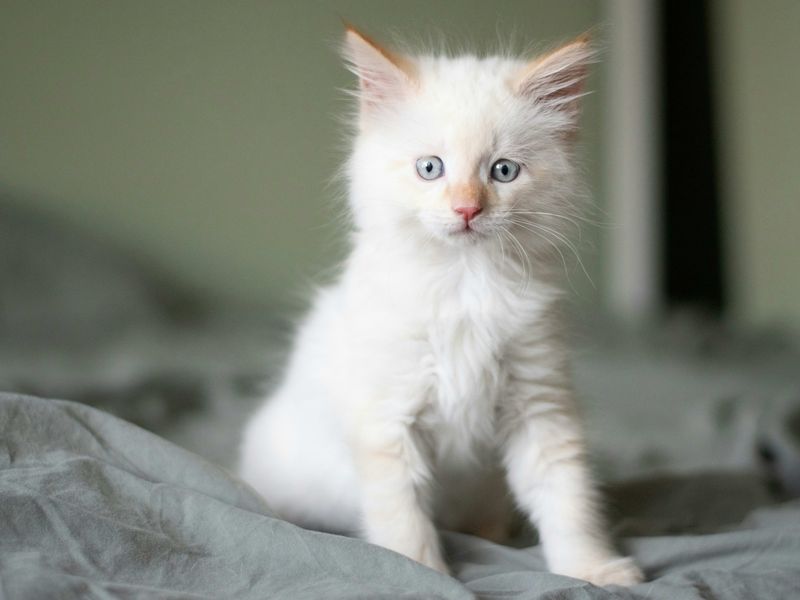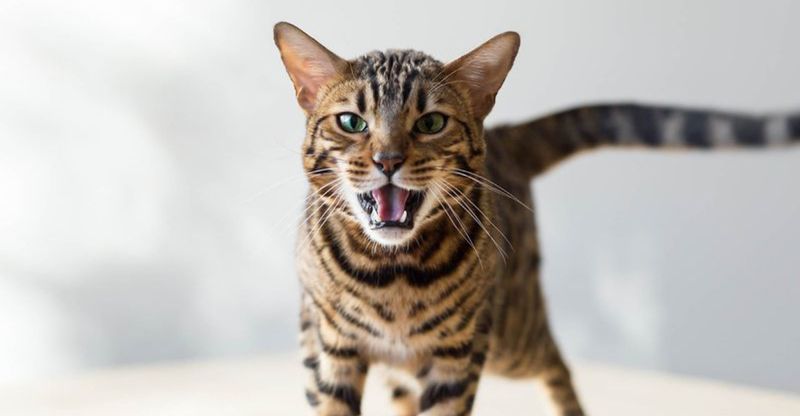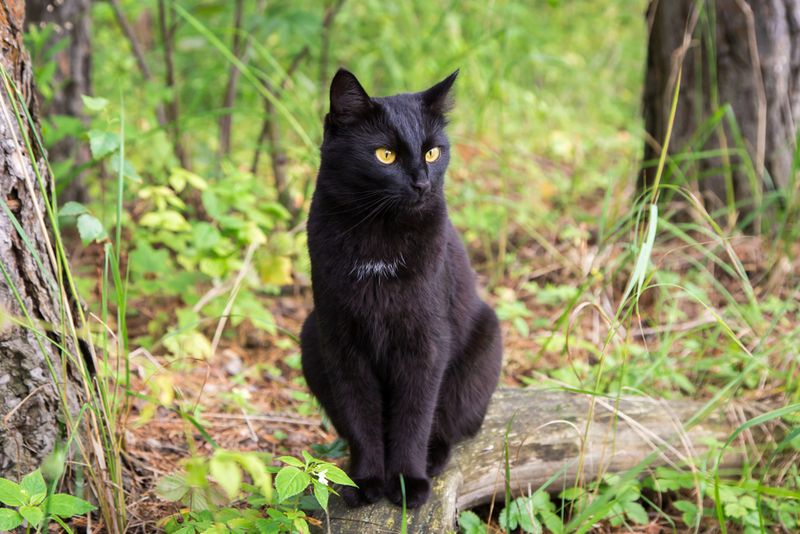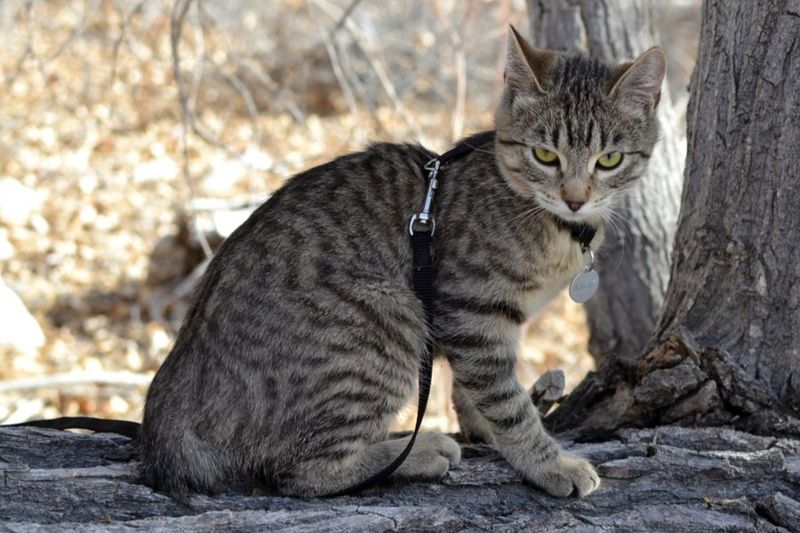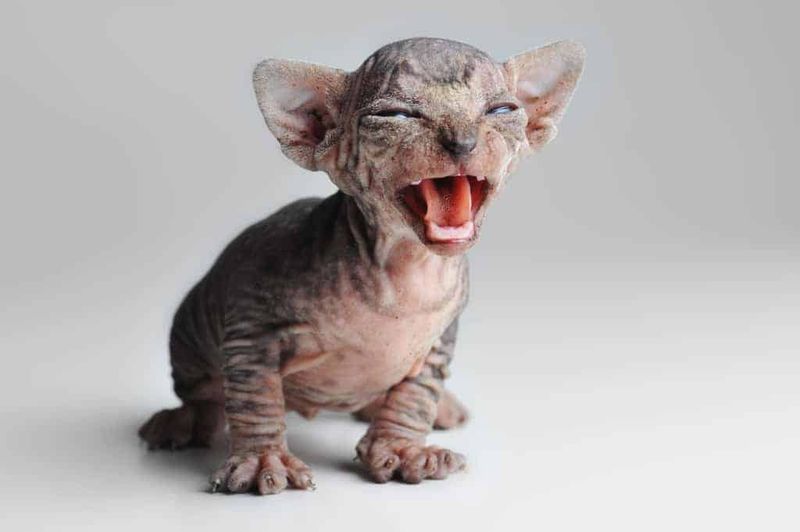📖 Table of Content:
Cat owners know that each feline has its own unique way of communicating. American cat breeds have developed distinct vocal patterns that set them apart from other cats around the world. From chatty conversations to musical trills, these cats express themselves in ways that often reflect their personalities and heritage. Let’s explore 8 American cat breeds with their own signature meow styles.
1. Siamese
Siamese cats bring the drama with their loud, demanding yowls that can sound surprisingly human-like. Their distinctive vocals often resemble a crying baby and can carry throughout an entire house without effort.
The breed’s famous talkativeness comes from their social nature. Siamese cats actively engage in ‘conversations’ with their owners, responding with varied meows when spoken to and rarely staying quiet for long.
Many Siamese owners report their cats develop specific meows for different needs – one sound for food, another for attention, and yet another for playtime. Their vocabulary can include up to 100 different vocalizations.
2. American Shorthair
With a balanced personality, American Shorthairs keep their meows short and meaningful. Unlike louder breeds, they usually speak up only to ask for something specific, such as a meal or access to a new space.
Their meows tend to have a pleasant, medium-pitched tone that’s neither too harsh nor too soft. Many owners describe their vocalizations as polite requests rather than demands.
These practical cats save their voices for important matters, making their occasional meows more meaningful. When an American Shorthair does become chatty, owners know something unusual has caught their attention.
3. Maine Coon
Rather than the usual meowing, Maine Coons are famous for their distinctive chirping and trilling. Their gentle voices produce bird-like chirps and soft melodic trills that contrast charmingly with their big, sturdy frames.
When excited or greeting their humans, Maine Coons often produce a unique combination of purrs and chirps. Their vocal range is surprisingly diverse for a cat breed.
Maine Coon kittens typically develop their signature sounds early, with many owners reporting they can recognize their cat’s voice among others. Their vocalizations tend to be quieter and less demanding than other talkative breeds.
4. Ragdoll
The vocal style of Ragdolls is characterized by gentle, sweet meows and subtle chirps. Their quiet, tender voices suit their calm temperament and make them ideal for apartment life.
Female Ragdolls typically vocalize more than males, though both remain relatively quiet compared to chatty breeds. When they do meow, it often sounds like a soft question, rising slightly in pitch at the end.
Most Ragdoll owners report their cats use physical cues alongside their gentle meows – a soft paw tap might accompany their quiet request for attention. Their purrs, however, can be surprisingly loud compared to their subtle meows.
5. Bengal
Unlike typical house cats, Bengals communicate with distinctive cooing chirps that reflect their wild roots, sounding more like their Asian leopard cat relatives than standard meows.
Active and intelligent, Bengals frequently combine their unique vocalizations with body language. They might chirp while pointing their tails at objects of interest or chatter excitedly when watching birds.
The Bengal’s vocal range includes distinctive sounds called ‘chortle’ or ‘warble’ – melodic noises that fall between a purr and a meow. First-time Bengal owners are often surprised by how different their cat’s vocalizations are from what they expected.
6. Bombay
Famous for their distinctive, powerful voices, Bombay cats produce meows that sound deep and rich—almost like a brass instrument—despite their compact frames.
These sleek black cats don’t just meow – they announce their presence with authority. Bombays develop a wide range of sounds from soft murmurs when content to loud, persistent calls when they want attention.
Many Bombay owners report their cats seem to time their most insistent vocalizations for maximum effect, such as early mornings or during phone calls. Their meows often have a distinctive pattern that family members can recognize even from another room.
7. American Bobtail
American Bobtails communicate through a series of chirps, trills, and gurgling sounds rather than standard meows.
Their vocalizations have a musical quality that owners describe as more conversational than demanding. These intelligent cats often use their unique sounds selectively, saving their voices for genuine communication rather than constant chatter. When excited about hunting toys or spotting birds, they might make distinctive clicking sounds with their mouths.
The breed’s hunting heritage influences their vocal style, with many of their sounds resembling those made by wild predators. American Bobtails frequently combine their distinctive vocals with expressive body language, especially their shortened tails.
8. Sphynx
Despite their hairless look, Sphynx cats have surprisingly strong voices, often delivering raspy, demanding meows that almost sound like they’re trying to speak human words.
Highly social and attention-seeking, Sphynx cats use their distinctive voices frequently throughout the day. They often develop a call-and-response pattern with their owners, expecting a reply when they vocalize.
Temperature-sensitive due to their lack of fur, Sphynx cats sometimes develop specific meows to indicate when they’re cold or want to cuddle for warmth. Their purrs tend to be exceptionally loud and vibrant, adding another dimension to their vocal personality.
